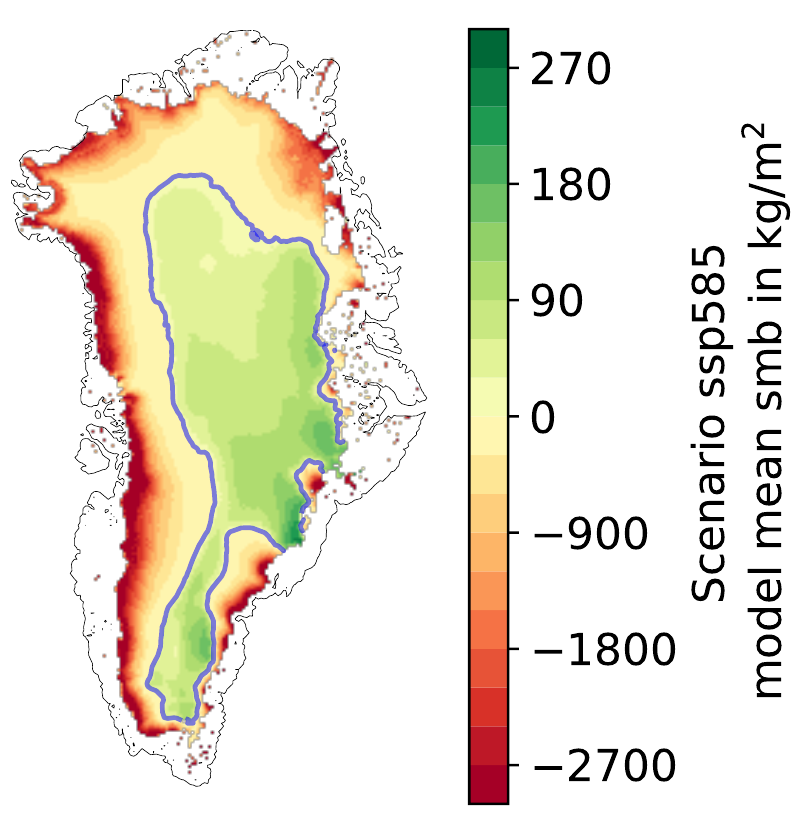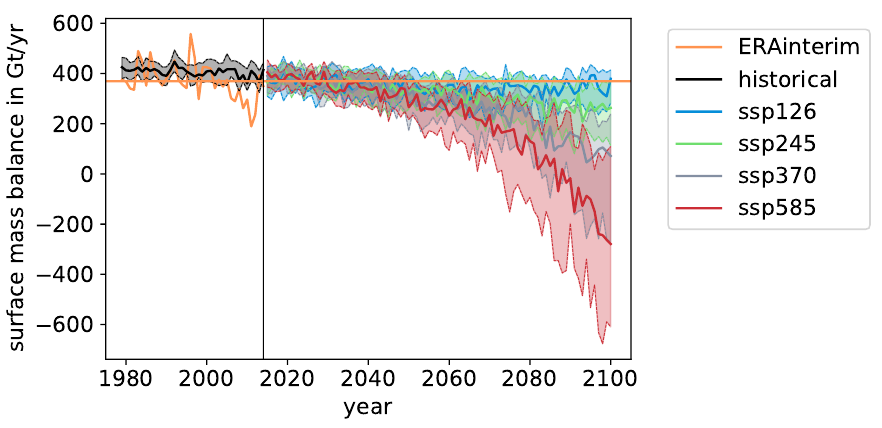The future of the Greenland ice sheet
Hovedinnhold
Project description
The Greenland ice sheet is one of the largest contributors to global mean sea-level rise today. It will continue to lose mass, contributing up to 140 mm to sea-level rise until the end of our century (Goelzer et al., 2020). The rate of mass loss will likely continue to accelerate after the year 2100, leading to a potential melting of most of the ice or more then 7 m of sea level rise equivalent (Aschwanden et el., 2019). However, these long-term estimates are based on simplified assumptions about the accumulation of snow that are not easily justified in a climate warmer than today's.
In this project, we propose to couple our efficient yet comprehensive snow model (Born et al., 2019) to a modern ice sheet model for Greenland (Robinson et al., 2020). The main goal will be simulations of the Greenland ice sheet that run until the year 3000. As the future climate is inherently uncertain, several assumption have to be made. One important aspect of this work is therefore to test these assumptions by running a large number of simulations.
Key questions are:
- How much will the Greenland ice sheet contribute to sea level rise?
- Is there a point of no return from which on further melting is unstoppable? When would that be?
- How certain can we be about the future of the Greenland ice sheet?
- How much of a difference can timely political action make?
Potential candidates for this project should have an interest in computer modeling but previous experience is not expected. The models to be used here are either written by ourselves or close collaborators and so that we can offer optimal technical assistance. Please get in touch for further questions.
References:
Aschwanden et al., 2019, Contribution of the Greenland Ice Sheet to sea level over the next millennium, Science Advances, 5, eaav9396
Born et al., 2019, An efficient surface energy–mass balance model for snow and ice, The Cryosphere, 13, 1529–1546
Goelzer et al., 2020, The future sea-level contribution of the Greenland ice sheet: a multi-model ensemble study of ISMIP6, The Cryosphere, 14, 3071–3096
Robinson et al., 2020, Description and validation of the ice-sheet model Yelmo (version 1.0), Geoscientific Model Development, 13, 2805–2823
Proposed course plan during the master's degree (60 ECTS):
GEOV222 / Paleoklimatologi
GEOV325 / Glasiologi
GEOV302 / Dataanalyse i geovitenskap
Prerequisites
Please take contact with the supervisor before signing up.
Field- lab- and analysis
This project focuses on numerical modeling. Initially, there will be technical work on coupling two of our models to work together. This will be done in close collaboration and with help of the supervisors, but may still take several weeks depending on the student's prior skills. After that, this new modeling system will be used to carry out simulations for different future climates as well as exploring uncertainties thereof. This is the main part of the thesis work.
Because the simulations are inexpensive to run on existing IT hardware, there will be considerable freedom to explore.

